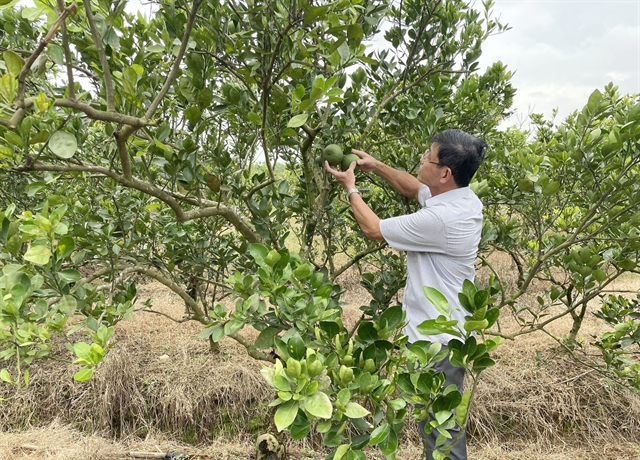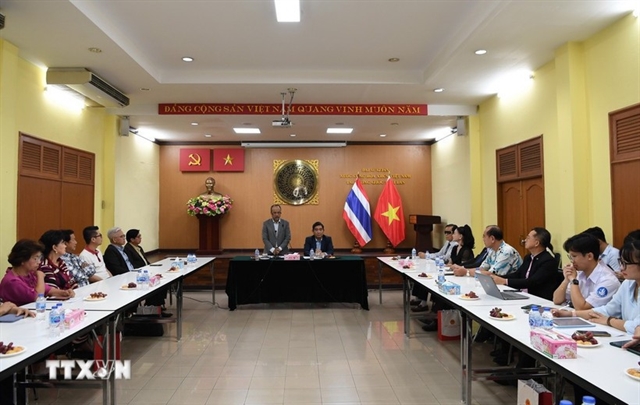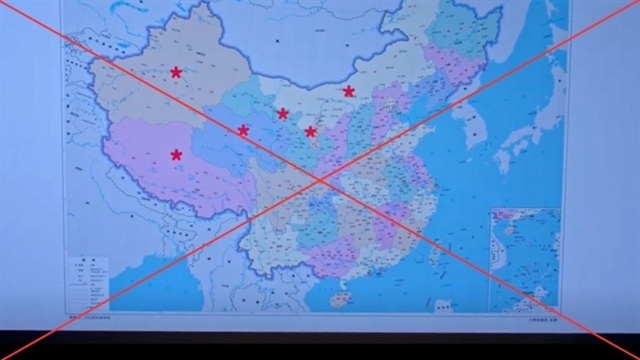 Society
Society

 |
| A fruit orchard in Đồng Nai Province’s Vĩnh Cửu District. More farmers in the province are developing tourism services in their orchards. – VNA/VNS Photo Lê Xuân |
ĐỒNG NAI – Fruit farmers who offer tourism services in their orchards in Đồng Nai Province are diversifying their products to attract tourists and increase incomes.
The southeastern region’s largest fruit producing province has more than 70,000ha of orchards and is well known for fruits such as durian, grapefruit, orange, mandarin, and custard apple.
Major fruit growing districts like Tân Phú, Vĩnh Cửu, Cẩm Mỹ, Xuân Lộc, and Long Thành and Long Khánh City have expanded orchard tourism services in recent years.
Besides traditional speciality fruits like small-seed durian and mangosteen, farmers grow new ones such as Musang King durian to serve tourists.
In Vĩnh Cửu District’s Tân Bình Commune, Tân Triều riverine island is well known for bưởi đường lá cam, a local speciality grapefruit, and many orchard owners here offer tourism services.
They also make various products from the fruit such as wine, jam, essential oil, grapefruit milk tea, and salads to serve tourists.
Lâm Phi Hùng, owner of the Sáu Hùng Ecological Orchard in Long Khánh City, was the first farmer to use a QR code in Bình Lộc Commune.
Tourists can scan the code to check information about him, the types of fruits he grows and their yields, and the location of the orchard.
Bình Lộc Commune, the largest fruit growing area in Long Khánh City, grows many speciality fruits including durian, rambutan and mangosteen.
Farming households in the commune have linked up to develop tourism and adopt VietGAP and other quality standards.
Long Khánh City now has more than 100 households who join hands to offer tourism services in their orchards.
The city receives tens of thousands of tourists visiting its orchards every day.
Đồng Nai has identified tourism as one of its key sectors and having huge potential for developing eco-tourism related to orchards, forests, waterfalls, rivers, and lakes.
It received 2.2 million tourists last year, including 75,000 foreigners, almost double the number in 2021, according to its Department of Culture, Sports and Tourism.
It hopes to welcome 2.7 million this year, including 80,000 foreigners, and earn revenues of VNĐ1.7 trillion (US$72 million), 40 per cent more than last year.
Under the national programme for building new-style rural areas, the province has invested in infrastructure in rural areas, especially roads, creating favourable conditions for orchard owners to offer tourism services.
The province has organised trips for farmers to other provinces to see for themselves how agricultural tourism models work.
Farmers in the province are increasingly using advanced techniques, good agricultural practices (GAP) and organic farming standards to improve their tourism services.
The Trường Phát Agricultural Service Co-operative in Nhơn Trạch District’s Long Tân Commune grows organic lotus and offers tourism services.
Nguyễn Thị Bích Lệ, its director, said tourists could watch how lotus is grown and harvested and products are made from it.
“Tourism services help the co-operative create added value for lotus and promote its organic lotus products.”
Many orchard owners plan to increase co-operation among themselves to diversify tourism products.
According to Văn Thành Đoàn, owner of a flower garden in Xuân Lộc District’s Xuân Bắc Commune, its highlight is the diverse variety of flowers, but he also grows fruits and offers a variety of foods to meet tourists’ requirements.
“Our long-term target is to expand the linkages between local orchards to develop closed tourism service chains from visiting orchards, offering food and providing other speciality tourism products.”
The province also has many craft villages that make well-known products such as fine art furniture, pottery, dried banana, and grapefruit wine.
But the linkages between orchards, craft villages and tourism destinations are tenuous, according to the province People’s Committee.
Most craft villages produce and sell what they make and do not research to find out what the market and tourists want.
Most tourists visit the province for just one day and spend an average of VNĐ500,000 ($21), the People’s Committee said.
If the province could keep tourists overnight, their spending would double or triple, it added. – VNS




